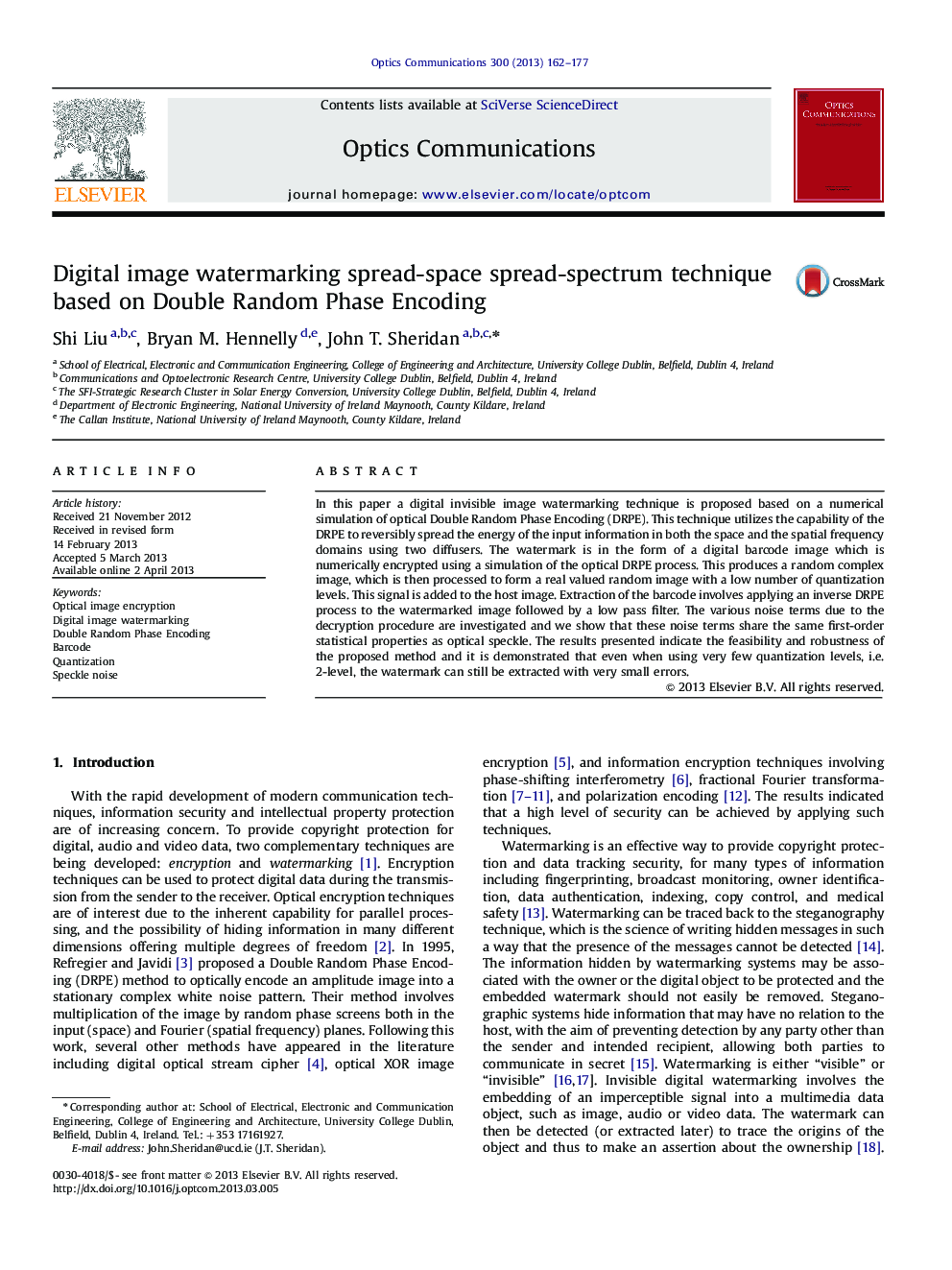| Article ID | Journal | Published Year | Pages | File Type |
|---|---|---|---|---|
| 1535275 | Optics Communications | 2013 | 16 Pages |
Abstract
In this paper a digital invisible image watermarking technique is proposed based on a numerical simulation of optical Double Random Phase Encoding (DRPE). This technique utilizes the capability of the DRPE to reversibly spread the energy of the input information in both the space and the spatial frequency domains using two diffusers. The watermark is in the form of a digital barcode image which is numerically encrypted using a simulation of the optical DRPE process. This produces a random complex image, which is then processed to form a real valued random image with a low number of quantization levels. This signal is added to the host image. Extraction of the barcode involves applying an inverse DRPE process to the watermarked image followed by a low pass filter. The various noise terms due to the decryption procedure are investigated and we show that these noise terms share the same first-order statistical properties as optical speckle. The results presented indicate the feasibility and robustness of the proposed method and it is demonstrated that even when using very few quantization levels, i.e. 2-level, the watermark can still be extracted with very small errors.
Keywords
Related Topics
Physical Sciences and Engineering
Materials Science
Electronic, Optical and Magnetic Materials
Authors
Shi Liu, Bryan M. Hennelly, John T. Sheridan,
